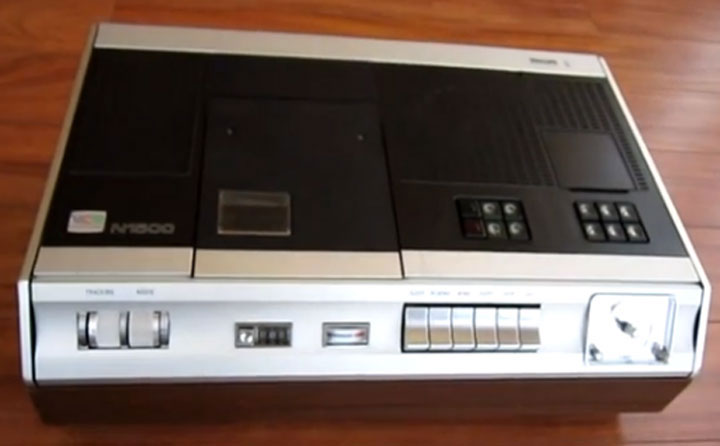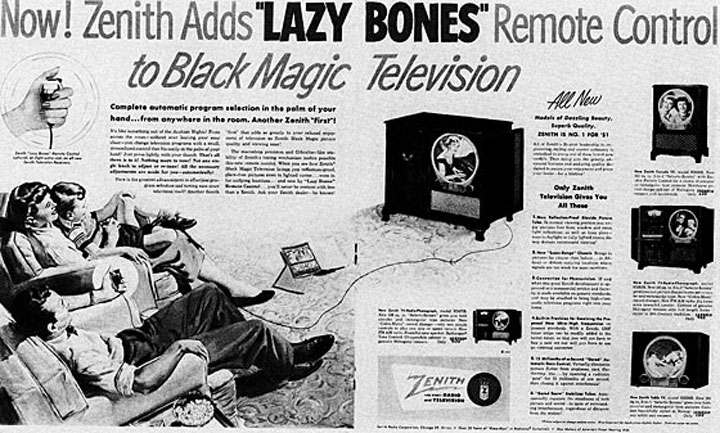ABOVE: Watch an introduction to the first commercially-available televisions in the U.S.

TORONTO — Visitors to the World’s Fair in New York on April 30, 1939 — opening day — were amazed to see moving pictures and hear sound coming from a small black-and-white screen built into a large wooden box.
They were undoubtedly stunned to learn this technological marvel could soon be in their living rooms.
“A new art and a new industry which eventually will provide entertainment and information for millions is here,” declared David Sarnoff, then-president of RCA at a press conference 10 days before the company unveiled TV sets at the 1939-40 World’s Fair.
Sarnoff described TV as “a new art so important in its implications that it is bound to affect all society.”
He added: “It is an art which shines like a torch of hope for a troubled world. It is a creative force which we must learn to utilize for the benefit of all mankind.”
Sarnoff promised “television receiving sets will be in the hands of merchants in the New York area for public purchase” within days.
Seventy-five years later, virtually every human in the developed world has at least one TV, or access to one.
The screens — both bigger and smaller than inventors likely envisioned — display stunning high-definition images and digital sound from hundreds of broadcasters on super-thin sets and handheld devices.
Of course, the TV is older than 75. It was patented in Germany in 1884 and sets were sold commercially in several countries beginning in 1928.
A 1938 model with a 12-inch screen could be had for $445 — more than $7,200 in today’s dollars.
Only those Canadians who lived close to the U.S. border and owned outdoor antennas — to pick up American station signals — bothered to buy TVs in the early days.
The debut of CBC stations in Montreal and Toronto in September 1952 sparked a rush on TVs — an estimated 85,000 sets were sold that year.
On the 75th anniversary of the introduction of the TV set at the World’s Fair, here are 10 fun facts:
1. The first television commercial — for Bulova watches — was broadcast on July 1, 1941 in New York before a baseball game between Philadelphia and Brooklyn. The company paid $9 for the ad. The first car commercial on television was for Chevrolet and aired on June 9, 1946.
2. The first video cassette recorder (VCR) for consumers was marketed in 1963 in the UK. It could record a maximum of 20 minutes of television. Sony debuted its first VCR for home use in 1965. It would be another decade before VCRs truly caught on.
3. MTV went on the air on Aug. 1, 1981 with the words: “Ladies and gentlemen, rock and roll.” The first VJ described MTV as “the best of TV combined with the best of radio.” The first video broadcast by the music network was “Video Killed the Radio Star” by The Bugles.
4. The first TV remote control came from Zenith in 1950. It was connected to the TV set by a wire (the wireless remote followed in 1955). A 1951 magazine ad for Zenith TVs promised consumers they can “change TV programs from your easy chair with the amazing Zenith ‘Lazy Bones’ remote control.”
5. In 1951, Motorola boasted “18 fashion award-winning cabinet styles” for its TVs. “When decorating your home one of your first considerations must be the style and placing of your television set,” the announcer declared. Motorola offered consumers 65 weeks to pay for their new TVs — with a small down payment. The company sold its TV division to the parent company of Panasonic in 1974.
6. The first national TV broadcast in colour was the 1954 Tournament of Roses Parade but most programming was black-and-white until 1965. Sales of colour TVs surpassed black-and-white sets for the first time in 1972.
7. Cable TV was introduced in Canada in 1952 but didn’t spread across the country for about two years. The technology offered up to 12 stations from the U.S. and Canada.
8. The first successful daytime drama on television was Search for Tomorrow, which debuted in 1951 and ran until 1986. The series was sponsored by Procter & Gamble — hence the term “soap operas.”
9. Betty White has been on television since 1949 — a decade after it was first available in the U.S. Her first TV series was 1953’s Life with Elizabeth and, now 92, she can be seen on Hot In Cleveland.
10. Global debuted on Jan. 6, 1974 with the launch of CKGN.
Finally, if you think your 65″ flat-screen HDTV is impressive, check out some of the spiffy TV designs of yesteryear.
BELOW: Take a look at the history of TV sets.








Comments